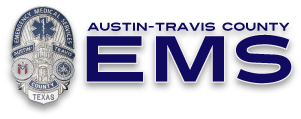Severely injured patients often require surgical intervention. Research shows that prehospital priorities for these patients are rapid assessment and transport to hospitals that are equipped and staffed to care for these patients at all times. Our measures reflect those priorities.
We report these measures by the fiscal quarter due the relatively low number of patients treated for potentially serious trauma each month.
Trauma Scene Time
Scene time is the interval between the time that ATCEMS arrives at the patient’s location and the time that the ambulance begins transport of the patient. Our goal is 15 minutes or less 90% of the time. This data does not include incidents where scene delay is beyond the control of the Medics. One example is a prolonged rescue situation such as removing someone who is trapped in a crashed vehicle.

Why Is This Important?
Prehospital care providers have a limited ability to assess and treat trauma patients. The seriously injured often require rapid surgical intervention. Limiting scene time and rapidly transporting these patients to trauma centers allows them to receive definitive care sooner.
Get more information about this measure (will be linked)
Trauma Call-to-Door Time
We measure the call-to-door times starting at the time the communications medic answers the phone in the 911-center. The time interval ends when the ambulance arrives at the hospital with the patient. Because many of the variables that affect the call-to-door time are outside of the control of EMS, we do not have goals for these time elements.

Why Is This Important?
Prehospital care providers have a limited ability to assess and treat trauma patients. The seriously injured often require rapid surgical intervention. Limiting scene time and rapidly transporting these patients to trauma centers allows them to receive definitive care sooner.
Get more information about this measure (will be linked)
Transport to Trauma Center
This indicator measures the percentage of patients who meet Trauma Activation criteria and accept care by EMS who are taken to an appropriate trauma specialty care facility.

Why Is This Important?
Trauma centers are hospitals that have staffing and equipment ready to care for severely injured patients on a 24/7 basis. Patients who meet trauma activation criteria should be transported to these hospitals so that they can receive timely and appropriate definitive care.
Get more information about this measure (will be linked)

